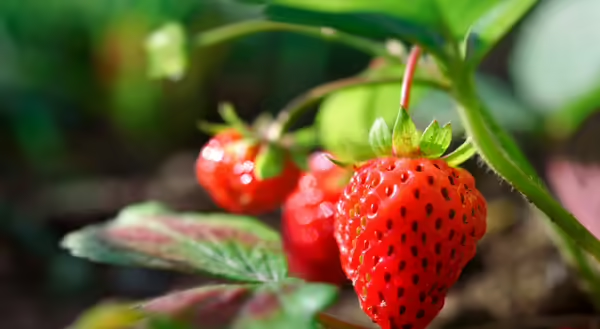
Have you enjoyed a sweet, juicy strawberry this spring? If so, it was likely grown in a warmer climate and shipped to your local grocery store. While store-bought strawberries are convenient, growing them in a home garden is both rewarding and surprisingly simple.
Strawberries should be planted between April and May, allowing ample time for root development and plant establishment before the onset of hot, dry summer conditions. These versatile plants can thrive in various settings, including containers, raised beds, or in-ground garden rows, making them well-suited for gardeners of all experience levels and yard sizes.
To successfully grow strawberries, it's important to carefully choose the planting site. Strawberries thrive in full sun, requiring at least six hours of direct sunlight each day, along with about one inch of water per week during active growth. They prefer well-drained soil rich in organic matter, with a slightly acidic pH around 6.0. For maximum production, remove all flowers during the first summer to promote strong root systems and runner development. Avoid planting strawberries in areas where tomatoes, peppers, eggplants, or potatoes have previously grown, as these crops can harbor verticillium wilt—a soil-borne disease that also affects strawberries.
There are three types of strawberries to consider planting in your garden: June-bearing, day-neutral, and everbearing.
June-bearing strawberries bloom in spring and produce a single, heavy crop of fruit over a 2- to 3-week period in June—just as their name suggests. They typically yield the largest quantity and size of berries within that short period. For best results, plant them 18–24 inches apart in rows spaced 4 feet apart.
Day-neutral strawberries flower and fruit continuously throughout the growing season, producing a supply of berries from late spring through fall. Although the fruit is smaller than June-bearing varieties, it’s known for its excellent flavor. Space plants 12 inches apart in rows that are 12 inches apart.
Everbearing strawberries produce two main crops: one in late spring and another in early fall. These plants usually bear smaller fruit and fewer runners, making them a great option for gardeners with limited space. Like day-neutral types, plant them 12 inches apart in rows that are 12 inches apart.
When selecting strawberry plants, opt for disease-resistant cultivars to help reduce the need for pesticides. Varieties differ in fruit size, flavor, disease resistance, cold hardiness, and harvest timing. Since the three types—June-bearing, day-neutral, and everbearing—look similar in foliage, it is important to confirm the variety by checking the labels before making a purchase.
Strawberry plants will not produce forever—they usually start to decline in productivity after 2 to 3 years. New plantings could be added every few years to guarantee continuous production. Each type of strawberry has different management needs, so check university resources for guidance on the best practices for each type.
A backyard strawberry patch can provide a delicious and rewarding harvest for you, your family, and your friends. With a bit of seasonal care, the satisfaction of growing your own berries is well worth the effort. Enjoy picking these sweet red gems straight from the plant—or preserve your bounty by making homemade jams and jellies to savor all year long.